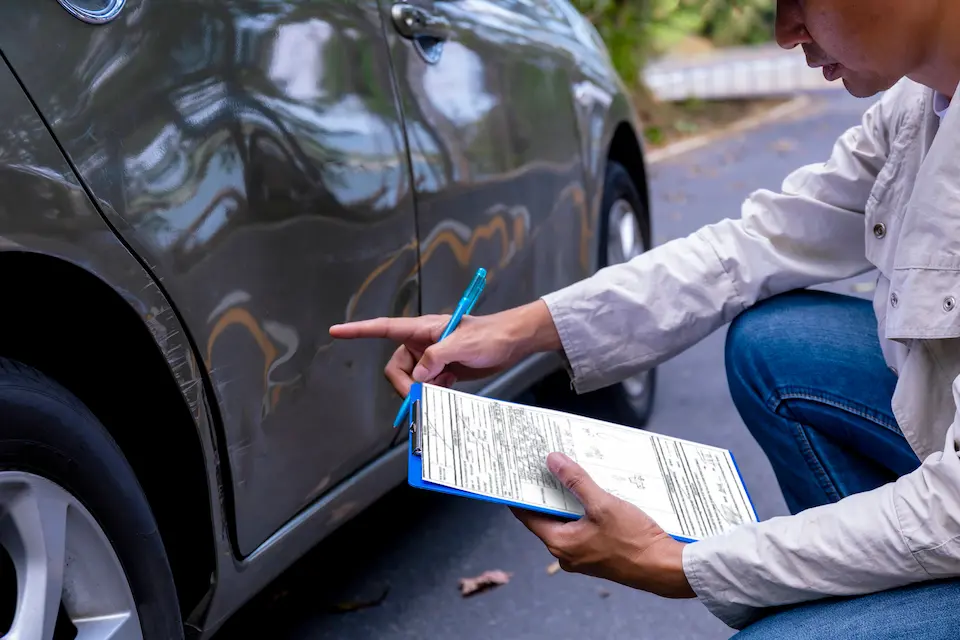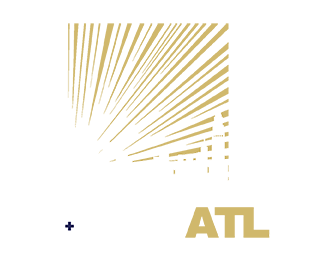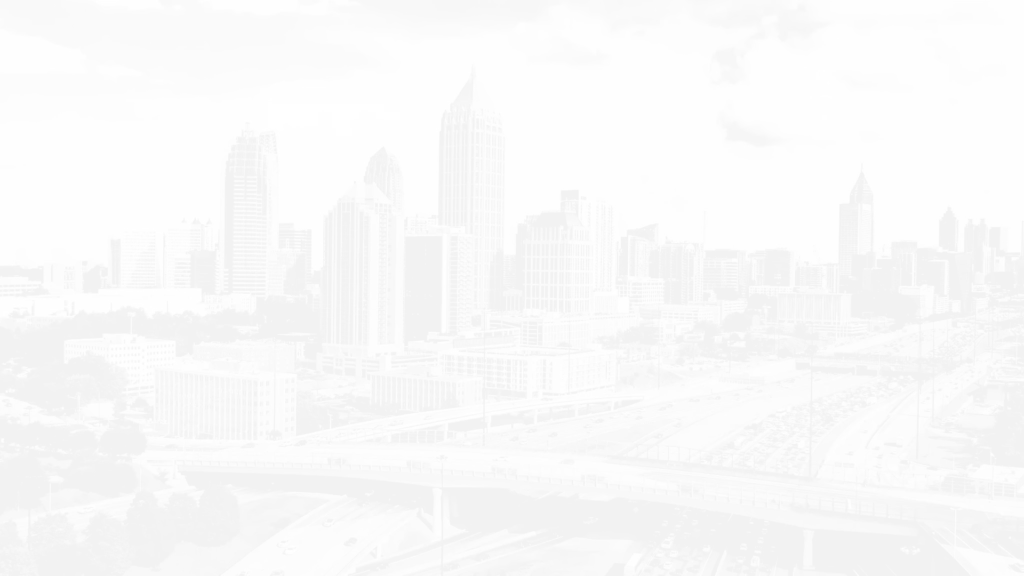Car accidents are prevalent in the U.S. – it records the most road crash deaths,…

When drivers are involved in a motor vehicle accident, they are rarely willing to admit that their negligent or reckless behavior led to the crash. Drivers at accident scenes often blame the weather, road conditions, some mechanical defect, or each other, and a thorough investigation may be needed to get to the truth. This is when an accident reconstruction expert or other investigation specialist is called in.
Nathan Fitzpatrick is an experienced auto accident attorney who has recovered millions of dollars for clients who suffered injuries in car accidents. In this article, he will explain how serious motor vehicle crashes are investigated. He will also examine how the evidence uncovered during a traffic accident reconstruction can be used to identify automobile defects, improve road design, and establish culpability in civil and criminal trials.
Understanding the Importance of Accident Reconstruction in Car Accidents
In 2021, car accidents in the United States claimed 42,939 lives and cost the economy about $340 billion. Most motor vehicle accidents cause only minor damage, and the motorists emerge relatively unscathed. That said, a small percentage of them cause death or serious injuries. These are the accidents that are investigated and reconstructed.
Accident reconstruction is important because it can uncover issues that could cause more crashes in the future. When traffic accident reconstruction specialists discover that a mechanical defect or fault caused a catastrophic crash, the ensuing vehicle recall could save hundreds of lives.
If an investigation reveals that an accident was caused by a missing sign, a faulty traffic signal, or a poorly maintained stretch of road, repairs could be made to prevent further crashes. When the evidence suggests that reckless or negligent behavior like speeding or distracted driving led to an accident, the road users who suffered injury, loss, or damage could use the investigator’s report to establish liability in a personal injury lawsuit.
What is Traffic Accident Reconstruction and Why is it Essential?
Accident reconstruction is essential because it saves lives and makes the nation’s roads safer. Motor vehicle accidents are the leading cause of death in the United States for people aged 1 to 54. Therefore, the importance of finding out what causes fatal crashes cannot be overstated.
Few people object when aircraft are grounded after a fatal accident to give investigators a chance to determine what went wrong, but they balk when car accidents lead to road closures. Before they object to minor inconveniences, drivers should consider that the number of people who die each year on America’s roads could fill 100 jumbo jets.
Traffic accident reconstruction investigations are conducted by private companies and local, state, and federal government agencies, so a central database is needed to prevent important information from slipping through the cracks.
To accomplish this, the National Center for Statistics and Analysis, part of the National Highway Traffic Safety Administration, established the Special Crash Investigations Program in 1972. This program compiles data from police reports, insurance claims, and accident investigations to prevent accidents and reduce injuries and deaths.
This information can also be used to shape road safety laws. When accident investigators discovered that teen drivers who travel with other young people are twice as likely to be involved in fatal crashes, Congress passed the Safe Teen and Novice Driver Uniform Protection Act, or the STANDUP ACT.
The STANDUP Act introduced graduated driver’s license programs that restrict when teen motorists can drive and who they can carry as passengers. Every state and the District of Columbia now has a GDL program in place, and road safety experts believe they have reduced the number of accidents involving teen drivers by up to 40%.
The Expertise of an Accident Reconstructionist
Crash reconstructions are only useful when the experts who conduct them reach the right conclusions. This is why an accident reconstructionist usually has an engineering, math, or science background and years of experience.
To get to the root of an accident’s cause, these experts must be able to understand matters including collision analysis, vehicle dynamics, photogrammetry, point of failure analysis, and biomechanics.
In large-scale investigations, individuals with expertise in several different areas may be involved. These experts could have backgrounds in:
- Physics: Physicists may be called upon to determine how fast vehicles were traveling when they crashed and what happened in the moments following a collision.
- Medicine: Physicians could provide information about the causes of injuries or fatalities. They could also scrutinize toxicology test results to determine how much of a role impairment played.
- Computers: Accident reconstructions are created on powerful computers using advanced CAD software. If the data is not entered precisely, the conclusions could be incorrect.
- Math: Calculating accident forces is a complex process influenced by factors including vehicle weight, speed, and momentum.
- Data retrieval: An average of 500,000 commercial trucking collisions occur annually in the United States. Valuable information used in an accident reconstruction is gathered from vehicle event data recorders. Electronic logging devices can reveal if a truck driver violated the Federal Motor Carrier Safety Administration’s HOS regulations.
- Automobile construction: Examining motor vehicle wrecks to ascertain whether a mechanical failure or defect caused a crash is an important part of a crash reconstruction. Automotive engineers do this work.
How Experts Determine How an Accident Occurred
When first responders are dispatched to a car accident scene, they prioritize providing medical assistance to injured road users and clearing the roadway.
Emergency services personnel take photographs and place markers before vehicles are moved to ensure that accident reconstruction experts have the information they need to determine what caused the crash.
It can be hours or even days before accident investigators arrive at the scene, but the work done by first responders usually gives them the information they need to proceed with their work.
Scene Investigation
A scene investigation is usually the first step in an accident reconstruction. After listening to 911 call recordings, reading witness statements, scrutinizing police reports, and studying photographs taken by first responders, accident reconstruction experts examine the scene to look for evidence.
Gouge marks on the roadway, accident debris, and skid or yaw marks left by vehicle tires are often the first things they notice. Additionally, the distance of the debris and tire marks from the site of the collision is important. They can reveal how fast vehicles traveled when they crashed and what evasive steps their drivers took to avoid an accident.
Crash reconstruction experts also survey and measure the scene to make sure that drawings and computer images of the area are accurate. Plus, they check the pavement to determine whether poor road maintenance could have played a role.
The age of tire marks is verified to ensure they were not left by vehicles involved in an earlier accident, and road safety issues like inoperative traffic signals or missing road signs are noted.
Event Data Recorders or Vehicle Black Boxes
Commercial aircraft have data recorders called black boxes, as do nearly all modern cars. These devices, called Electronic Data Recorders (EDRs), provide accident reconstruction experts with a great deal of useful information.
EDRs keep track of vehicle speeds, throttle positions, and driver inputs, and the data they store can also tell accident investigators if vehicle occupants were wearing their seat belts.
After retrieving and reviewing this data, accident investigators can determine how fast a car was traveling when it crashed and when its driver started braking. EDR data can also inform accident reconstruction experts about dangerous conditions like low tire or oil pressures and high coolant temperatures.
When the drivers who cause accidents face legal consequences, EDR data can be used to establish guilt in a criminal trial or liability in a civil lawsuit.
In February 2024, a 60-year-old California woman was convicted of vehicular homicide based largely on evidence recovered from her Mercedes SUV’s black box. The data showed that the woman was driving at speeds of up to 81 mph just moments before she struck and killed two boys in a Los Angeles crosswalk. The posted speed limit in the area is 45 mph.
Vehicle Inspection & Analysis
One of the most important parts of a crash reconstruction investigation is inspecting the wrecks of the vehicles involved. During these inspections, automobile safety systems are examined, and crucial components like suspension and steering parts are checked for signs of failure. During their vehicle inspection, vehicle inspectors also pay close attention to paint transfer, can reveal how vehicles came into contact, and look for signs of botched repairs and neglected maintenance.
Vehicle inspections are almost always conducted because they sometimes uncover defects that could affect thousands or even millions of other vehicles. When a woman died and her son suffered debilitating injuries after her Ford Pinto burst into flames in 1972, accident investigators noticed that the car’s fuel tank was placed in a position that made even a moderate rear-end collision extremely dangerous.
This discovery led to a nationwide recall of the Ford Pinto, and subsequently, Grimshaw and Gray's families filed a tort action against Ford. In the outcome of the case known as the case of Grimshaw v. Ford Motor Company, the jury awarded $2.516 million to the Grimshaws, $559,680 to the Grays in compensatory damages for their injuries, and $125 million in punitive damages to punish Ford for its conduct.
Ford appealed the judgment, leading the court to reduce the punitive damages award to $3.5 million. However, Ford's request to have the punitive damages award dismissed entirely was denied by the court, which found that Ford had knowingly endangered the lives of thousands of Pinto owners.
Studying vehicle wrecks can also reveal how fast vehicles were traveling when they crashed. All vehicles sold in the United States are subjected to rigorous crash testing by NHTSA, and these tests are filmed.
Accident investigators can sometimes calculate crash speeds by comparing accident damage to the damage sustained in crash tests. NHTSA crash test data also includes information about the injuries that vehicle occupants would likely suffer in accidents that occur at 35mph, 38.5 mph, and 40 mph.
The Role of Technology in Modern Accident Reconstruction
The advent of the information age has provided accident investigators and crash reconstruction experts with various powerful new tools. There was a time when slide rules were used to calculate figures like an accident’s Delta-V, which is a measurement of a vehicle’s change in velocity, but now these figures are provided by computers. Data processing programs can also calculate the following:
- Time-distance relationships
- Momentum
- Air time
- Critical speed yaws
- Throw distances
- Engine speeds
- Crush damage analysis
- Braking efficiency
- Closing speeds
Crash reconstruction experts also use CAD programs to create three-dimensional accident simulations. These programs use mathematical and physics calculations to precisely replicate the movement of vehicles in the moments before an accident.
Engineers input data about the vehicles involved and road and weather conditions, and then they run several simulations until the 3D outcome matches the accident scene.
These programs can even create videos that recreate the accident from several vantage points, including the driver’s seat. More importantly, these accident reconstruction videos can be powerful evidence in a personal injury lawsuit.
Interpreting Data: From Collision Analysis to Injury Reconstruction
The automotive engineers, scientists, and mathematicians who investigate and reconstruct car accidents process vast amounts of data. Information like the length of skid marks, the severity of injuries, and the degree to which vehicle safety cages are deformed is used to calculate speeds, trajectories, and collision angles.
Small miscalculations can lead to erroneous conclusions. That's why experts with a great deal of knowledge and experience perform these calculations
Injury Reconstruction: Linking Physical Evidence to Injuries
Determining how car accidents cause injuries can make automobiles safer. All passenger vehicles in the United States have steering columns that collapse in an accident. This safety feature became mandatory equipment after accident investigators in the 1960s noticed that car accident victims often suffered fatal impalement injuries in high-speed collisions. Thanks to work like this, car interiors now have softer surfaces, padded dashboards, and more secure seat anchors.
NHTSA crash tests can help accident investigators to determine the cause of car accident injuries. Dummies representing a 12-month-old infant, 3-year-old child, 6-year-old child, 10-year-old child, adult female, and adult male are used in NHTSA crash tests, and cameras are installed in subject vehicles to record the forces these dummies are exposed to in front, side, and rear-end collisions.
Accident reconstruction experts can then use this data to determine where vehicle occupants were sitting in a crash and how they were injured.
The data from automobile black boxes tells investigators whether or not passenger vehicle occupants were restrained by seat belts when an accident happened. Seat belts became mandatory automobile safety equipment in 1968 to prevent ejection injuries. In 2021, about half of the people killed in traffic accidents were not wearing seat belts.
Investigators also check emergency room treatment details and autopsy findings to understand car accident injuries better. Plus, they check the medical records of injured or killed road users to make sure that their injuries are not preexisting.
Speed and Impact: Understanding the Forces at Play
Newton’s second law of motion states that an object's force equals its mass multiplied by its acceleration. This principle means that accident reconstruction experts must determine how fast a vehicle traveled when it crashed to understand the forces its occupants were exposed to. Additionally, this analysis is done by examining evidence at the scene, like skid and yaw marks, and performing crush analysis on vehicle wrecks.
Determining how fast a vehicle traveled when it struck a stationary object like a lamp post or tree is fairly straightforward. Still, things become more difficult for accident investigators when vehicles strike each other. This complexity arises because the nature of the collisions can either amplify or mitigate the forces involved.
In a rear-end collision involving two moving vehicles, the impact force is calculated by subtracting the speed of the vehicle struck from the speed of the striking vehicle. In a head-on collision, the speed of the two vehicles is added to calculate crash forces.
It's not hard to see what these forces mean for collision victims. The greater the force, the more severe the potential injuries. High-speed impacts, especially head-on collisions, can result in catastrophic injuries due to the immense forces exerted on occupants' bodies.
Even in cases where vehicles are designed to absorb and redistribute crash energy, the human body has limits to what it can withstand. Understanding the forces involved in a crash helps reconstruct the event and appreciate the importance of vehicle safety features and driving practices to minimize these forces to protect occupants.
Human Factors: Analyzing Driver Behavior and Responses
Human error is the primary factor behind most motor vehicle accidents. Unfortunately, pinpointing the specific type of negligent or reckless behavior that caused a crash is often challenging. When analyzing forensic and physical evidence for human factors that could have caused a crash, accident investigators may consider the following:
- Excess speed: Speeding is the leading cause of fatal accidents in the United States. In 2021, 28% of deadly crashes were caused by a driver exceeding the posted speed limit or traveling at a speed unsafe for the prevailing road conditions.
- Impairment: Drunk driving accidents claim about 10,000 lives every year. Accident investigators check toxicology test results and medical records to find out if drivers were under the influence of drugs or alcohol when they crashed.
- Distraction: Unlike intoxication, distraction does not give accident investigators any telltale clues. However, investigators may suspect distraction played a role if there were no skid or yaw marks at an accident scene. EDR data reveals that no evasive action was taken before a collision. Investigators may use subpoenas to obtain wireless service records to confirm these suspicions.
- Fatigue: After being awake for around 18 hours, people experience impairments in reaction time, vigilance, multi-tasking, and hand-eye coordination, equivalent to a blood alcohol content (BAC) of 0.05%. This impairment escalates after 20 hours of wakefulness to a level comparable to a BAC of 0.08%, which is the legal limit for drunk driving in most states. So, going without sleep impairs an individual about as much as a blood alcohol concentration that would lead to a drunk driving charge.
- Inadequate maintenance: When motor vehicles are inspected after a crash, accident investigators look for signs of neglected maintenance, like bald tires, worn brake pads, and loose steering connections. When this kind of evidence is discovered, it can be used to establish liability in a personal injury lawsuit.
Environmental and Road Conditions: Factoring in External Elements
Poor weather or road conditions can amplify human factors and make accidents more likely. This is why reconstruction experts spend a great deal of time studying accident scenes and reading weather reports. Factors that they look for include:
- Weather that could have impeded visibility: Mist, fog, and heavy snow can make driving at even moderate speeds far more dangerous. The stopping distance of a car traveling 50 mph is approximately 175 feet. If poor weather reduces visibility to less than 175 feet, a vehicle traveling at 50 mph or faster would be unable to avoid an accident, no matter how alert and skilled its driver is.
- Weather that could have reduced traction: Motor vehicles take a lot longer to stop when rain or ice makes road surfaces slick. When accident investigators study weather reports, they check to see if rainfall is heavy enough to cause a phenomenon known as aquaplaning. This happens when a wedge of water builds up between vehicle tires and the road surface, making steering impossible.
- Debris on the roadway: Shredded tires and other roadway debris can cause accidents in two ways. Cars can crash after striking objects in the roadway, or drivers can lose control while steering to avoid obstructions. Accident investigators spend a long time looking for roadway debris because even small screws or metal shards can cause tire blowouts.
- Poorly maintained roads: Roads can become dangerous when they are not properly maintained. Loose surfaces can impede traction, and uneven pavement can make steering less predictable and more difficult.
- Lighting or signage issues: Dangerous stretches of road are usually well-lit, and signs are placed to warn drivers about the hazards ahead and encourage them to reduce speed. Accidents are more likely to happen when street lights are not working or warning signs are missing.
Case Study: Real-Life Application of Accident Reconstruction
Here are a few examples illustrating the pivotal role of accident reconstruction in legal outcomes.
Speed Calculations Lead to Acquittal
When a Pennsylvania woman was charged with vehicular homicide for causing an accident that claimed the life of one of her children, her criminal defense attorney used accident reconstruction techniques to convince a jury to find her not guilty. The woman was charged because she was making an illegal U-turn when a commercial vehicle struck her car, but data analysis proved that the truck driver was primarily to blame.
The turning point in the trial came when the responding police officer was called to testify. The officer was an accident reconstructionist, and his report contained detailed information about the accident scene and the vehicles involved, showcasing expert accident analysis. During cross-examination, the defense attorney used the accident report to establish that the truck was traveling at 78 mph in a 45 mph zone at the time of the crash.
Accident Reconstruction Clears Tesla Autopilot Feature
When a Tesla electric car crashed into a tree and caught fire in Texas in 2021, responding police officers found nobody behind the wheel. Media outlets speculated that Tesla’s autonomous autopilot system was operating the car at the time of the accident, but a National Transportation Safety Board investigation reached a different conclusion.
When NTSB investigators retrieved the Tesla’s EDR data, they discovered that the driver had his seat belt fastened and used the accelerator pedal just a few seconds before the accident.
They determined that the crash was caused by excessive speed and intoxication. The EDR data showed that the car had accelerated from 39 mph to 67 mph five seconds before the impact. The investigators also concluded that the driver had moved into the back seat after the crash.
How Accident Reconstruction Influences Legal Outcomes
These two cases reveal how accident reconstruction methods can influence legal outcomes. If the responding police officer in the Pennsylvania case had not been a trained accident reconstructionist, the woman accused of vehicular homicide could have been convicted and sent to prison for years. If NTSB investigators had not eliminated Tesla’s Autopilot feature as the cause of the Texas crash, the electric car manufacturer could have faced a wave of product liability lawsuits.
Choosing the Right Expert: Tips from an Experienced Attorney
Accident reconstruction experts can be very important witnesses in civil or criminal trials because juries find expert testimony compelling. A detailed accident reconstruction could also convince an insurance adjuster to make a more generous car accident settlement offer. However, it is important to choose the right experts.
Scientists and engineers who use complex language that they assume their audience understands can confuse and baffle laypeople, so it is important to find experts who communicate clearly and simply. Checking qualifications is also important because attorneys often seek to undermine scientific evidence by questioning the credibility of experts.
Having qualified and capable experts on your side could be especially useful if you get into an accident in an at-fault state like Georgia. The at-fault driver’s insurance company is responsible for compensating accident victims in Georgia, and the state’s modified comparative negligence law will reduce the amount of compensation you can recover if an accident investigation reveals that you were partly to blame.
Take the Next Step and Secure Expert Legal Assistance for Your Car Accident Case
If you suffer injuries in a car accident, you deserve to have an attorney in your corner who understands accident reconstruction methods and will advocate fiercely on your behalf. The Fitzpatrick Law Firm has used expert witnesses and accident reconstruction reports to establish liability in dozens of car accident cases, and our attorneys have recovered millions of dollars in verdicts and settlements for our clients. If you would like to discuss your legal options with one of our attorneys, you can schedule a free consultation by completing our form below or calling us at (678) 607-5550.


